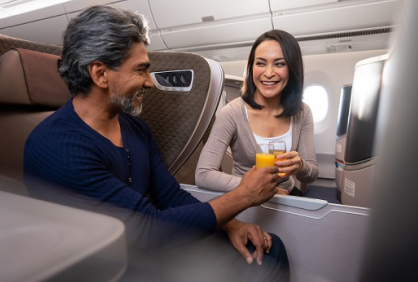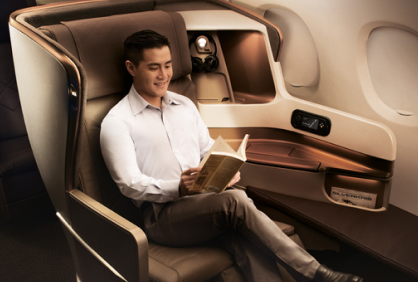
Unlock Exclusive Deals
Discover a world of unbeatable, unpublished airfares that are only available offline. Our travel experts are here to provide you with:
EXCEPTIONAL PHONE-ONLY SPECIALS
(833) 223-3883
UNLOCK EXCLUSIVE SAVINGS
Loading...
Please enter valid departure
Please enter valid destination
Please enter valid date
Please enter valid date
Please enter your name
Please enter valid Phone Number
Please enter valid email
The verify field is required

LOYAL CUSTOMERS

REPEAT CUSTOMERS

AVERAGE SAVINGS PER TICKET
At BusinessTravel365, we understand that your business class experience begins the moment you request a quote. Your time is valuable, so our dedicated Travel Consultants are committed to providing you with the best deals, without any excuses. Rest assured that the prices quoted by our Travel Consultants will always be competitive and affordable.


We believe in making business class fares accessible to everyone, ensuring an experience tailored to your needs. Our comprehensive range of travel services goes beyond just booking flights; we also offer hotel and rental car reservations, cruises, private transfers, and exciting tours. Whether you're planning a business trip for yourself or a family holiday, our dedicated team will go the extra mile to provide you with the utmost comfort and convenience you deserve.
Experience the thrill of up to 65% off on first and business class airfare.
Indulge in premium flights, exquisite hotels, and seamless transport for an extraordinary luxury trip.
Let our expert Travel Managers negotiate a deal tailored just for you.
Experience maximum comfort with minimum stress. Get assistance whenever you need it.
With a remarkable 96% 5-star rating on Trustpilot, 86% of our customers choose us for their bookings again.
Posted at - May 30, 2023





I was so relieved with the knowledge that this is a legitimate agency! My agent was so delightful and kept me in touch of any changes. Such a wonderful experience. Just watch out for the bogus ones. Again, this is a truly good agency. Got me a great price on SAGA PREMIUM business/1st class!
Posted at - May 23, 2022





I had excellent experience with Warner from Business Travel 365. He's patiently searching and providing me the best choices for my trip which I had to change several times. During the process, he always kept me well informed of the choices and status of my booking with lots of cares to my demand. What's an outstanding service.
Posted at - Oct 18, 2019





Chris with BusinessTravel365 was great to work with! He is very helpful, knowledgeable and accommodating. He wants to find the best itinerary for you at the best price. I would definitely recommend him and already have to friends.
Posted at - Oct 16, 2019





Carl from Business Travels 365 was excellent, giving fast, efficient and timely service, cheaper flights than even the airlines' website, and very helpful! Will definitely use them again! :)
Posted at - Oct 15, 2019





Dealing with Carl was fantastic...very communicative, efficient and of course his price was vastly better than any other agency! I will continue working with BusinesTravel365 and that is highest compliment I can pay!
Posted at - Oct 12, 2019





I highly recommend Business Travel 365. Chris was professional and most helpful booking my international flights. I have and will recommend this company to my friends. Thank you again Chris!
Posted at - Oct 06, 2019





The process was get. I started doing it my self. Prices for business class was crazy. Then using this great service cost was like coach. We did add a stop but they made it like an additional vacation now we have a few days and it perfect. Did most all by email which I like. I would highly recommend
Posted at - Oct 01, 2019





Larry has been great and so helpful. Very happy with my travel plans.
Posted at - Sep 29, 2019





Larry did a great job of giving me options for my international flights. I told him my parameters and he accommodated me. I will definitely reach out to him again.
Posted at - Aug 01, 2019





I had a great experience with Rio. He was fast, honest, effective, hardworking and helped me search the best fares. I appreciate his help and perseverance and hope to use his services again soon!
Posted at - Jul 26, 2019





A great price and a great follow-up. The billing and invoicing part had a few hiccups, but they were ultimately settled. So all good.
Posted at - Jul 21, 2019





Got our business class trip and we save over $1k with Michael's help. Thank you for what you do to save us get a cheaper price
Posted at - Jul 19, 2019





Quick responses, and valuable insights - highly recommend!
Posted at - Jul 19, 2019





Quick responses, and valuable insights - highly recommend!
Posted at - Jul 05, 2019





At the beginning I was a bit sceptical, but soon I realised that the person called Larry I dealt with was extremely friendly, fast and very knowledgeable. We are four people and are very pleased with how our flight to Dubai got handled. Anytime again, thank you!
Posted at - Jul 04, 2019





Great experience. I was very careful since it is an internet based transaction. Price for my ticket was 60% less than with Lufthansa. After the reservation was done, I paid and a ticket was issued a couple of hours later. Kai is very reliable and trustable and responsive. I will certainly book again with him.
Posted at - Jun 20, 2019





Clyde is super, ask for him.
Posted at - Jun 20, 2019





Clyde is super, ask for him.
Posted at - Jun 20, 2019





Clyde is super, ask for him.
Posted at - Jun 20, 2019





Very helpful and professional
By providing your email, you agree to receive promotional emails from us. Don't worry, you can unsubscribe at any time.
You agree to
our Terms of Use and Privacy Policy.